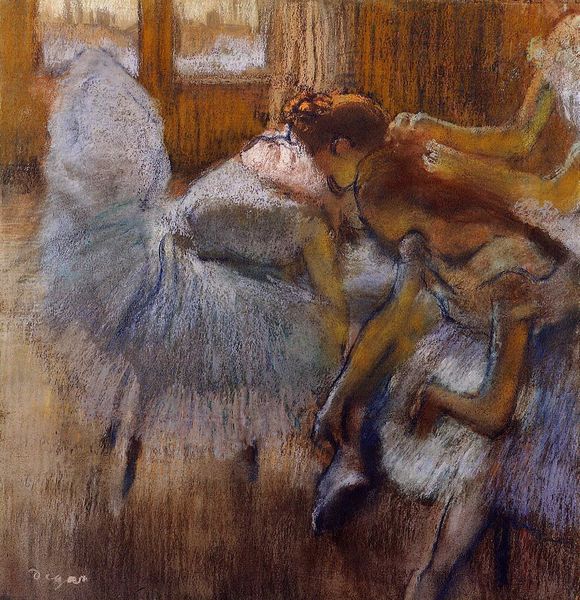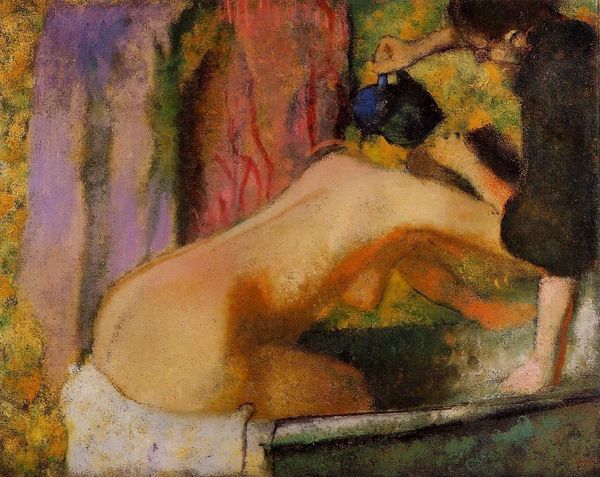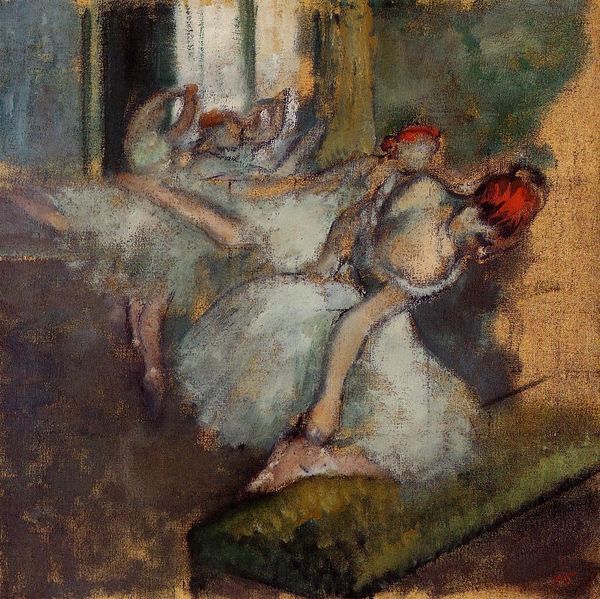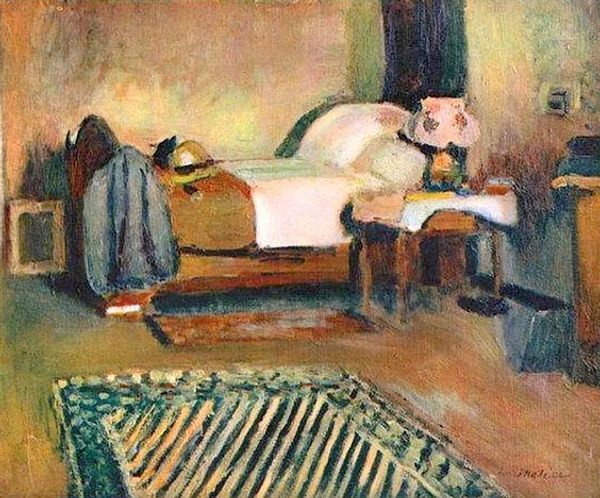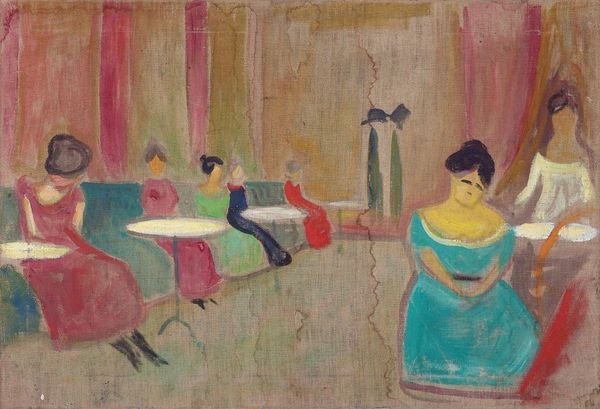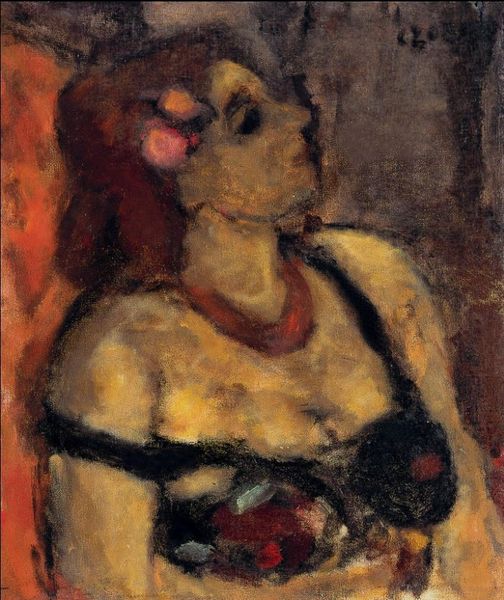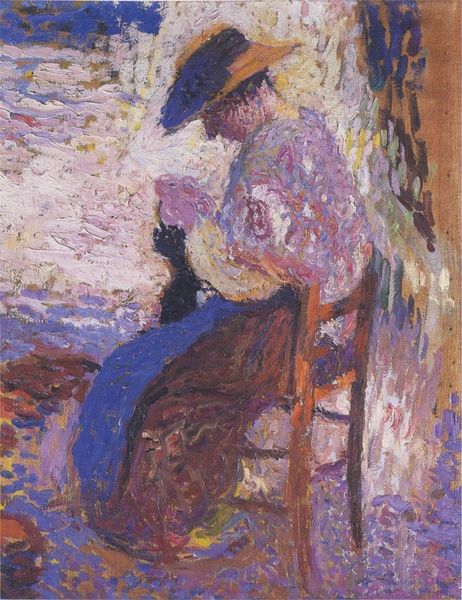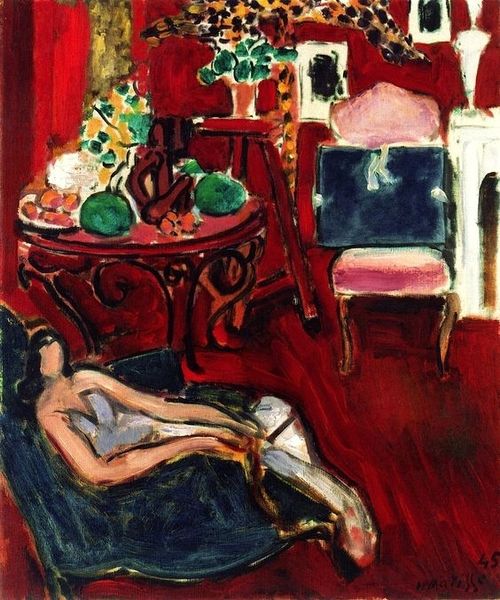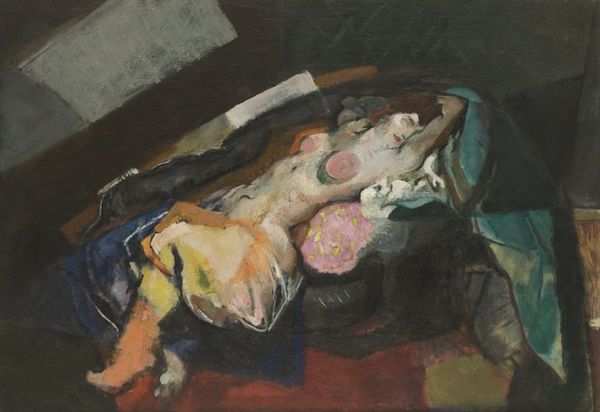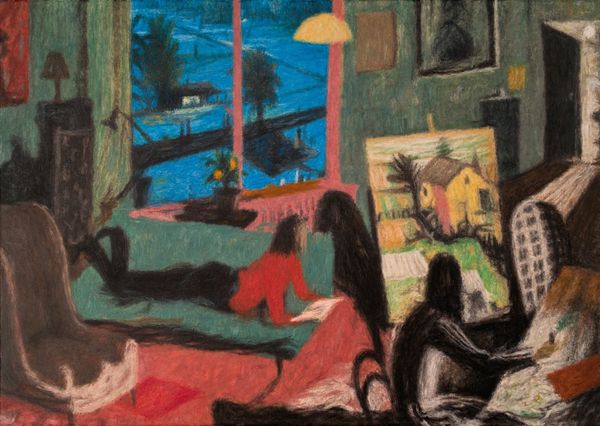
painting, oil-paint
#
portrait
#
gouache
#
painting
#
oil-paint
#
figuration
#
oil painting
#
modernism
Dimensions: overall: 48.5 x 63.2 cm (19 1/8 x 24 7/8 in.)
Copyright: National Gallery of Art: CC0 1.0
Curator: This is Mark Rothko's "Music," created in 1936, well before his signature color field paintings. Editor: It’s striking how different it is. My immediate impression is a sense of quiet intimacy. The muted colors and hazy outlines create this very dreamlike, insular space. Curator: Absolutely. If we consider the social context of the 1930s, marked by economic depression and anxieties surrounding impending war, the embrace of art as social critique gains further insight into why many artists of the period gravitated toward intimate or domestic scenes that offered, either implicitly or explicitly, an important escape from the harsh reality outside their home or studio, even. Editor: You see how the brushstrokes are loose and expressive. And how Rothko doesn't blend the colors completely, allowing them to coexist. Curator: I believe we also should observe here how women are centered. These paintings frequently engage in depictions of everyday experiences in interior spaces or shared outdoor spaces in intimate social configurations. So how do you see gender, race, or politics interacting? Editor: Well, I don’t feel qualified to identify this painting within the sphere of politics. Rather I note a focus on surface texture and light interacting on materials; one thinks of the cost of these oil paints at this time or the accessibility to creating such artworks… and so it raises certain issues, in my mind, about accessibility, labour, consumption—all those juicy, tangible bits of cultural expression. It does look like an attempt at portraying material reality, even if its meaning seems veiled by emotional uncertainty, I would guess. Curator: I appreciate how the title invites us to hear as well as see. There’s almost a gentle melody in the repetition of forms and colors. And yet there is also an absence...Rothko has also intentionally left a space, to encourage engagement, perhaps? Editor: Possibly. Although it reminds us, again, of just how tactile the whole artworking process actually can be and how dependent all meanings or intentions can be based on availability to experience, and experiment with, one of humanity’s most rewarding social rituals. Curator: Right. “Music” embodies a quiet commentary. In this early figurative stage, before his more abstract style emerged, Rothko sought connection within this setting—a couple sharing a small room and a musical experience with their audience. Thank you for opening a perspective that honors what's in plain sight. Editor: And I appreciate being shown ways to approach "Music" from points less traveled; thinking and talking about artwork in its socio-political moment is never wasted.
Comments
No comments
Be the first to comment and join the conversation on the ultimate creative platform.


